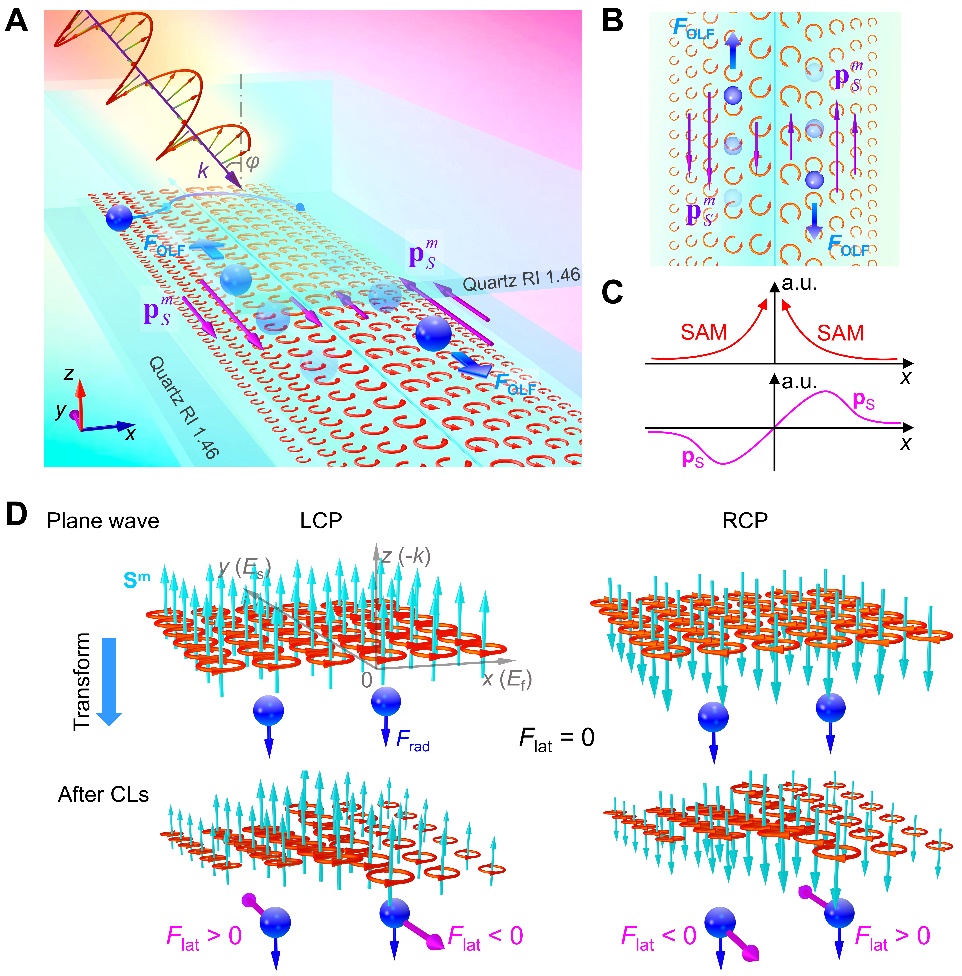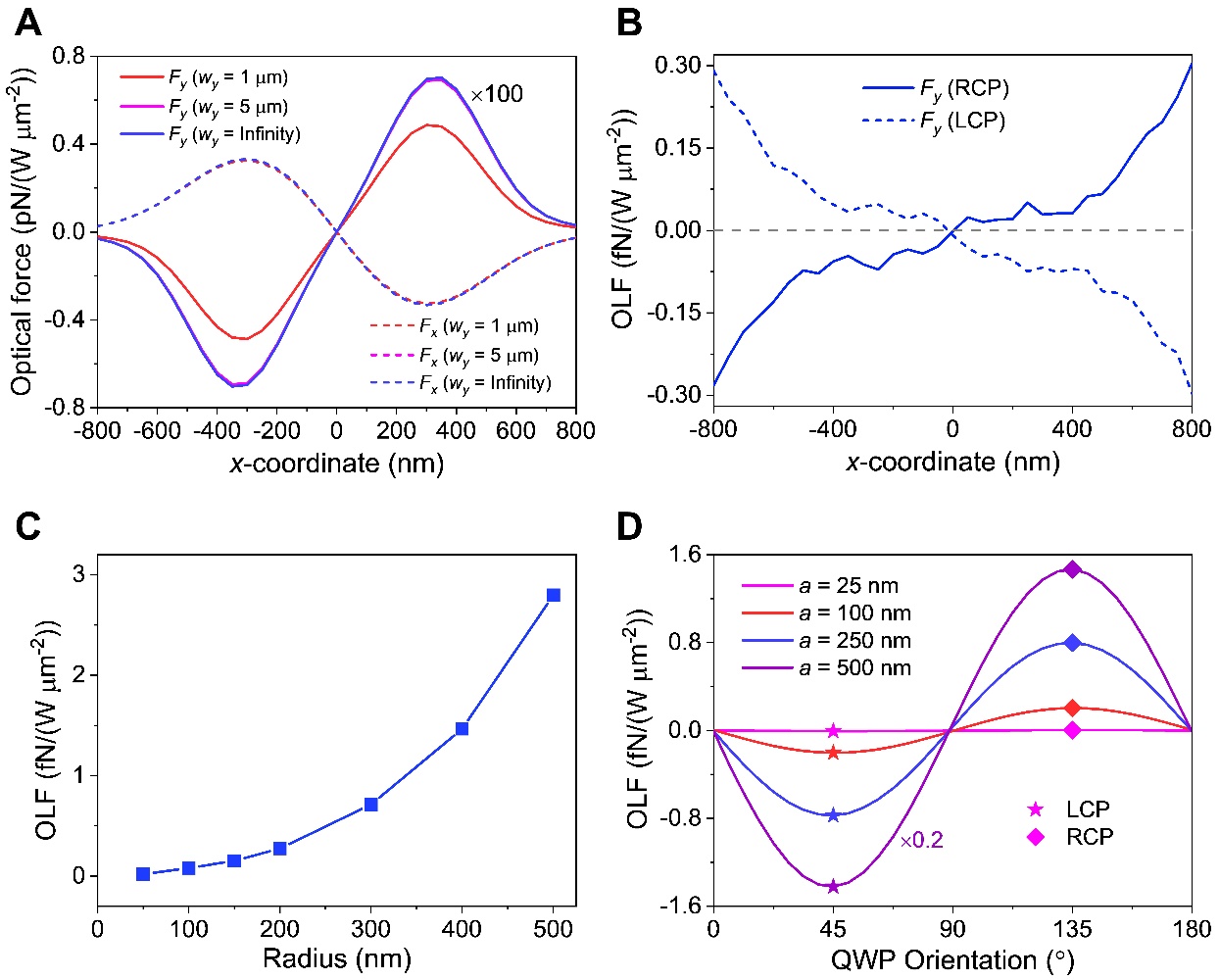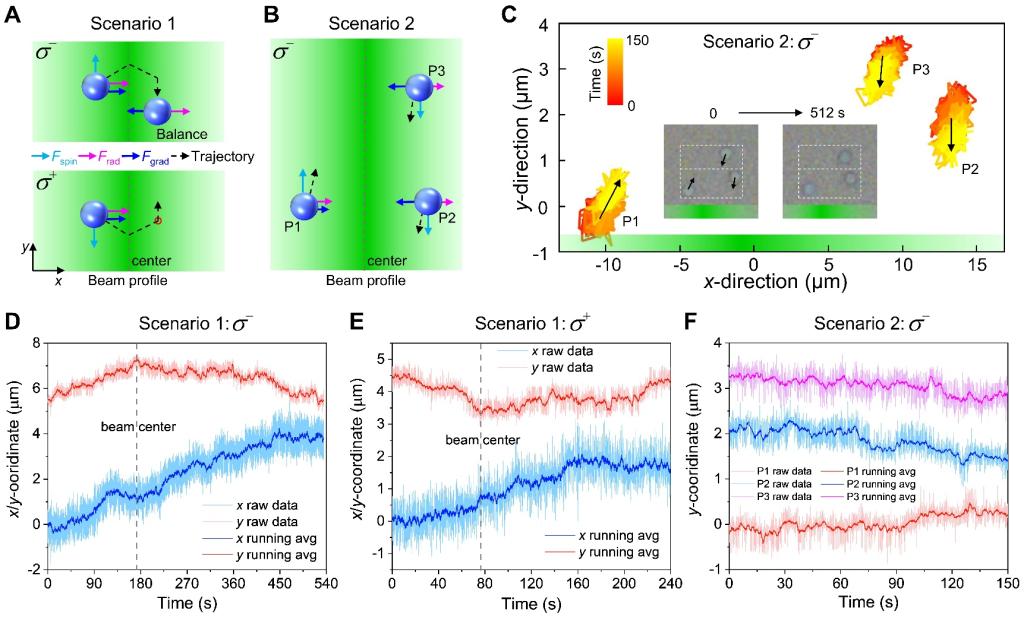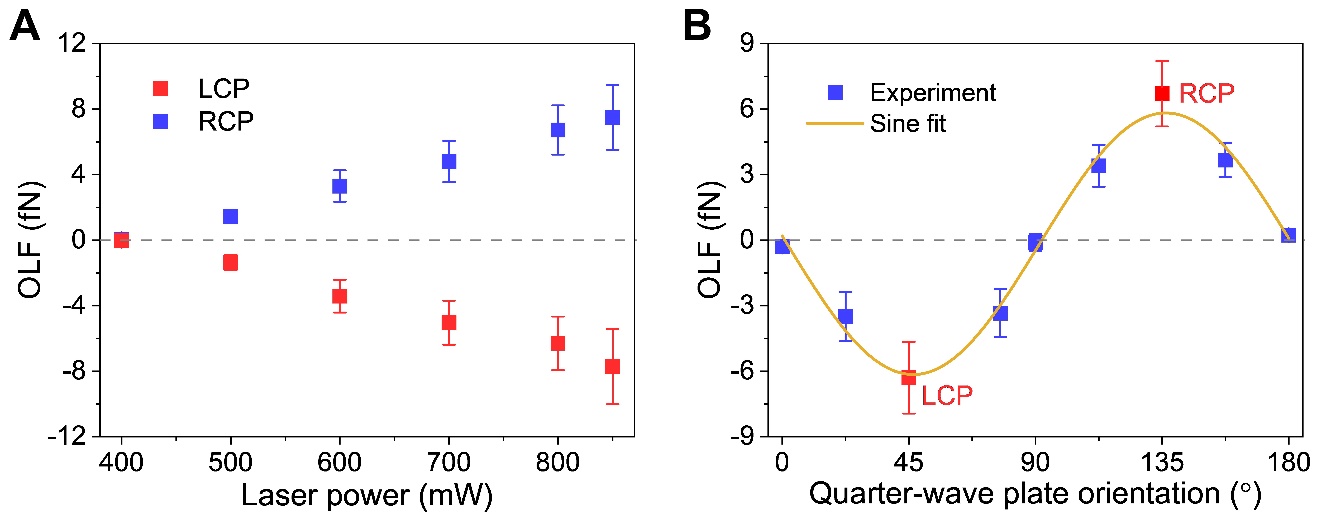On December 1, Beijing time, Yuzhi Shi, professor of the School of Physical Science and Engineering, Tongji University, and his collaborators published a paper entitled "Stable optical lateral forces from inhomogeneities of the spin angular momentum" online on the journal Science Advances. This paper is the first to study stable optical lateral forces dominated by spin angular momentum in a single simple optical field and reveal the general mechanism of the influence of spin angular momentum inhomogeneity on optical force experimentally.

Optical tweezers use mechanical effects of the interaction between light and matter to generate optical forces to manipulate particles. Conventional optical forces include the gradient force along the gradient direction of light intensity and the scattering force along the direction of light vector. The optical lateral force, which represents a category of force perpendicular to the wave vector, has attracted a great deal of interest due to its intriguing physics and potential applications in enantiomer sorting. Although people have made extensive and in-depth exploration of optical lateral force, the simplest way to realize it is to generate optical lateral force by using the interaction between spin and orbital angular momentum through structured optical field. It is impossible to generate optical lateral force by simply using the action of optical spin angular momentum in a single simple beam. This research team has thoroughly studied the general underlying physics of spin angular momentum inhomogeneity on the optical force, as shown in Figure 1.
It has been shown that in a single loosely focused line-shaped beam, the inhomogeneity of the spin angular momentum (SAM) can give rise to the transverse spin quantity (the curl of the spin angular momentum). The interaction of electric dipole and magnetic dipole can generate lateral optical force parallel to the transverse spin. At the same time, they theoretically predict that particles of different materials, such as metal and dielectric spheres, will experience lateral optical forces in opposite directions due to their different polarizabilities. In addition, because the gradient of spin angular momentum on both sides of the optical axis is opposite, the corresponding transverse spin quantity is also in opposite directions, resulting in the optical lateral force in the opposite direction, as shown in Figures 1B-1D.

Figure 1: Origin of the spin-correlated optical lateral force in a single line-shaped beam.
At the same time, the team systematically studied theoretically the influence of parameters such as spot convergence size, beam polarization, particle position and size on the lateral force of light, as shown in Figure 2. The direction of the lateral force on the particle with fixed material on one side of the optical field is related to the polarization of the optical field, and the maximum value of the force corresponds to the left-right polarized light. However, when the same particle is located on both sides of the beam, it will experience the lateral force of light in the opposite direction. In addition, the lateral force of light has a linear relationship with the particle size.

Figure 2: Numerical calculations of optical forces in the line-shaped beams.
The team also ingeniously designed experiments to investigate optical lateral forces, as shown in Figure 3. In order to eliminate the influence of coupling of spin orbital angular momentum caused by interface on lateral optical force, the refractive index of surrounding medium was matched with that of the substrate, thus an inhomogeneous environment was constructed. Experimental results show that particles with a diameter of 5 microns move in opposite directions on both side of a beam with opposite spin amounts, and the same direction is reversed for left- and right-polarized light fields. Quantitative measurement of optical force shows that the magnitude of optical lateral force is linearly related to laser power, and there is a minimum laser energy to make particles move since the optical lateral force needs to overcome friction and inertia, as shown in Figure 4. As shown in Figure 4B, the magnitude and direction of optical lateral force are related to the polarization of optical field as the sine function, being in consistent with the theoretical prediction results (Figure 2D).

Figure 3: Experimental observations of optical lateral force induced by the spin angular momentum inhomogeneity

Figure 4: Quantitative analysis of spin-angular-momentum-correlated optical lateral force.
This study is the first to systematically investigate the mechanism of optical forces arising from the inhomogeneity of optical spin angular momentum in a general optical field. The strategy is to exclude the effect of spin-orbit angular momentum interactions on optical forces, and to achieve stable optical lateral forces dominated by spin angular momentum in a single beam. It also sheds light onto the development of nontrivial optofluidic approaches for optical sorting and probing.
Yuzhi Shi, professor of School of Physical Science and Engineering, Tongji University, is the first author and co-corresponding author of the paper. Ai Qun Liu, Professor of Nanyang Technological University, Singapore, Franco Nori, Professor of Riken, Japan, and Din Ping Tsai, Professor of City University of Hong Kong are co-corresponding authors. Collaborators include Dr. Zhu Tongtong, Dalian University of Technology; Professor Liu Jingquan, Shanghai Jiao Tong University; Dr. Hui Zhang, Nanyang Technological University, Singapore; Associate Professor Shubo Wang, City University of Hong Kong; Professor C. T. Chan, Hong Kong University of Science and Technology; Associate Professor Pin Piech Wu, Cheng Kung University, Taiwan; and Professor Anatoly V. Zayats, King's College London, UK. The research was supported by the Fundamental Research Funds for the Central Universities.
Paper link:https://www.science.org/doi/10.1126/sciadv.abn2291
